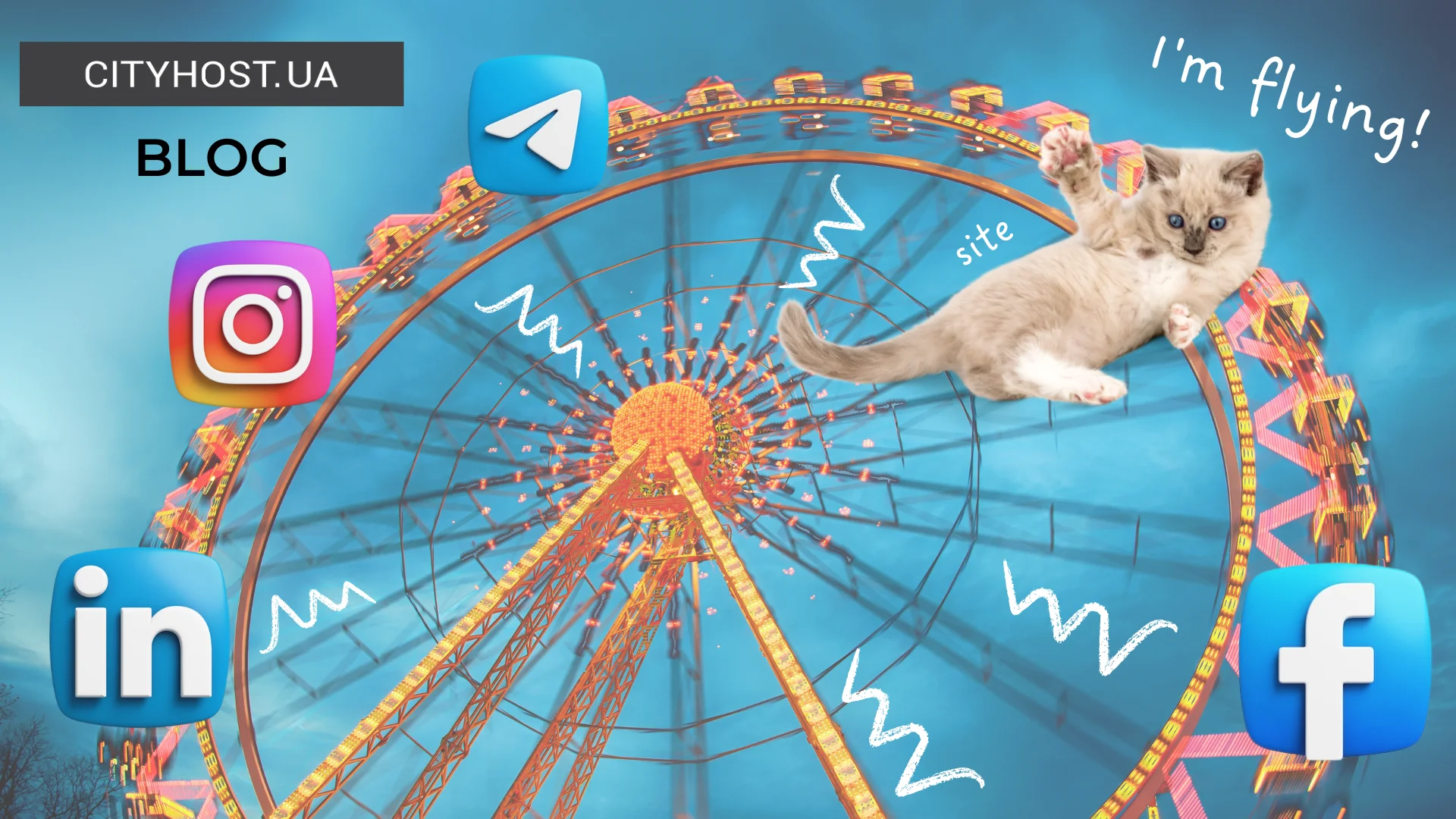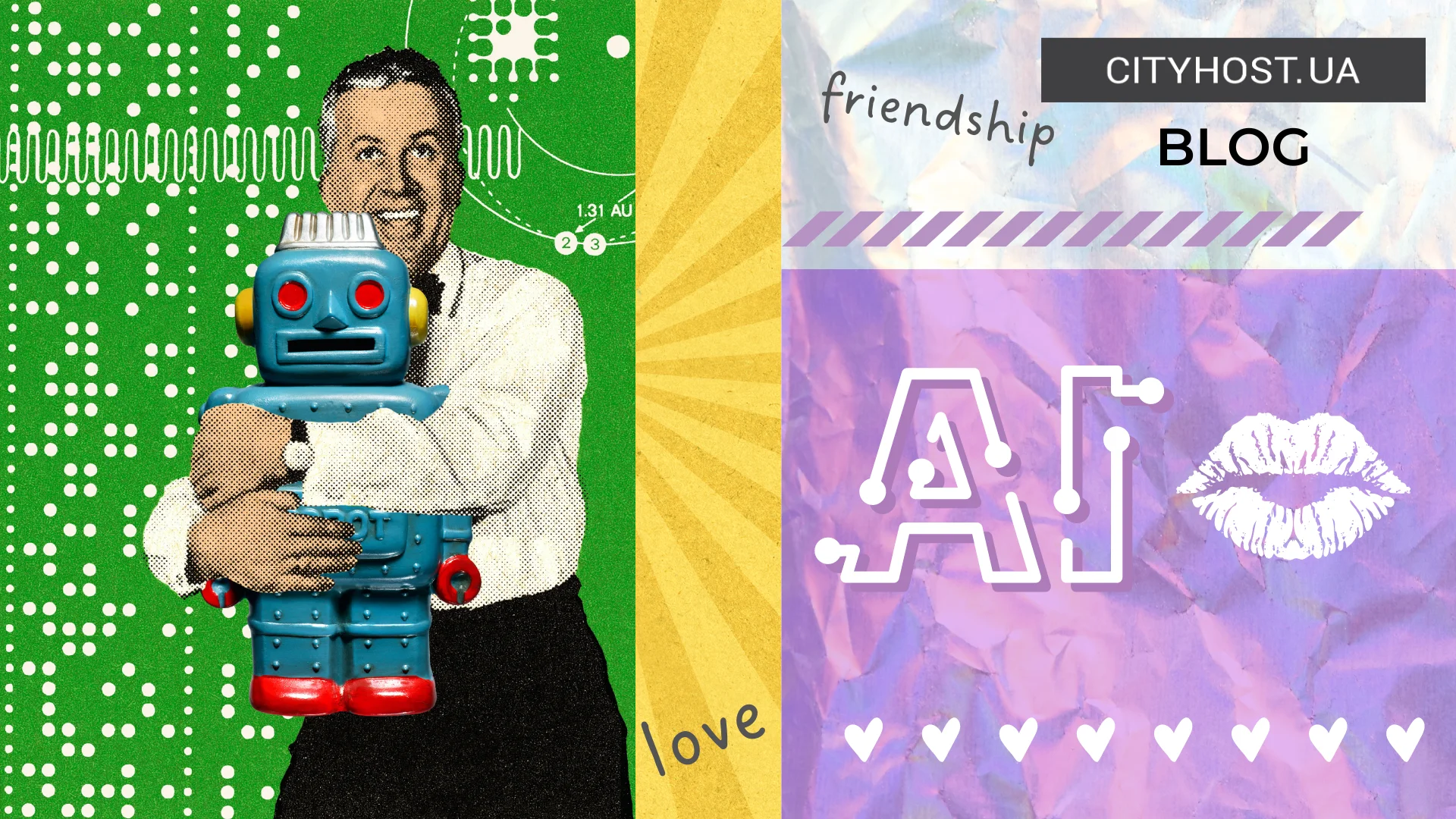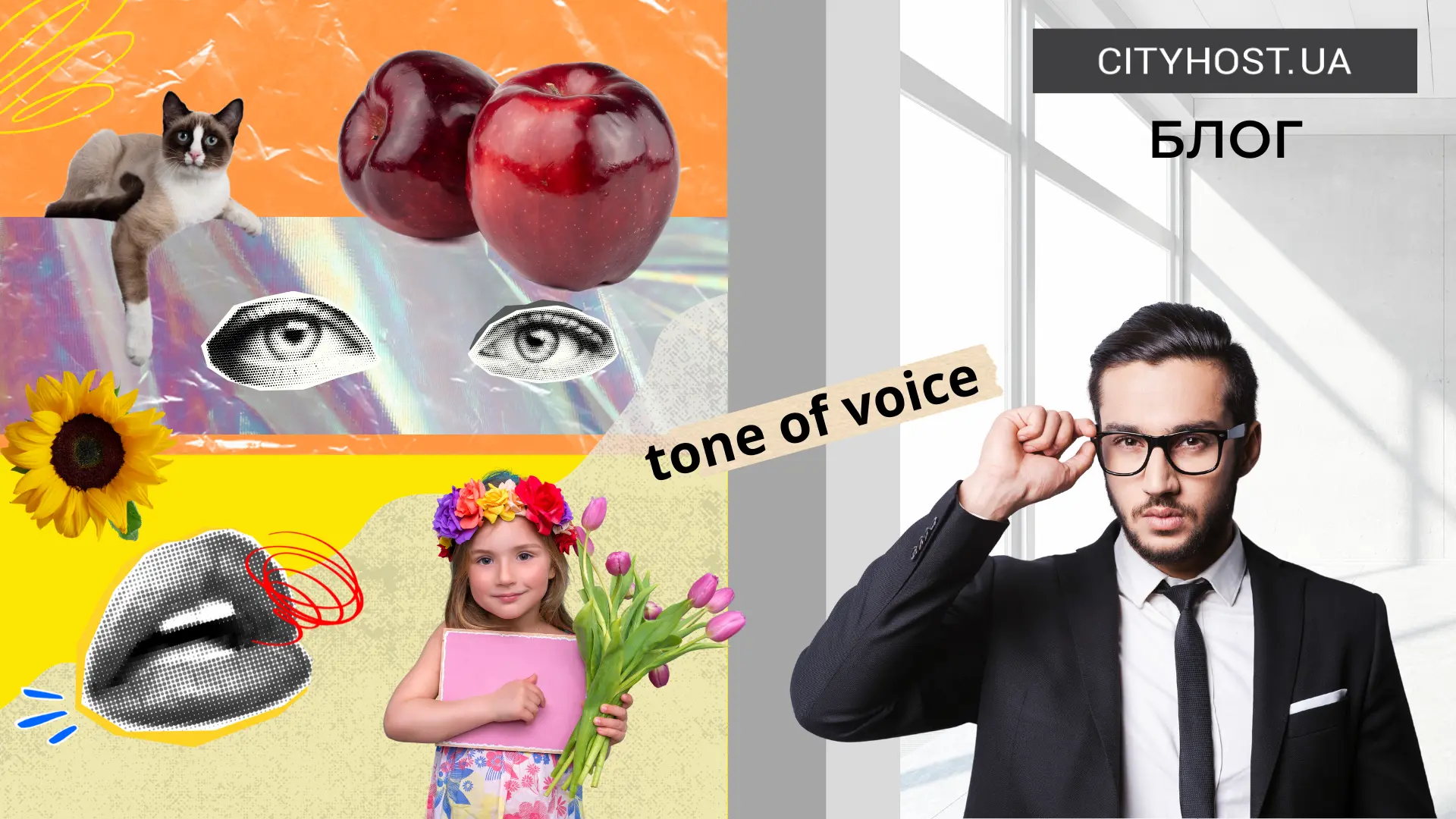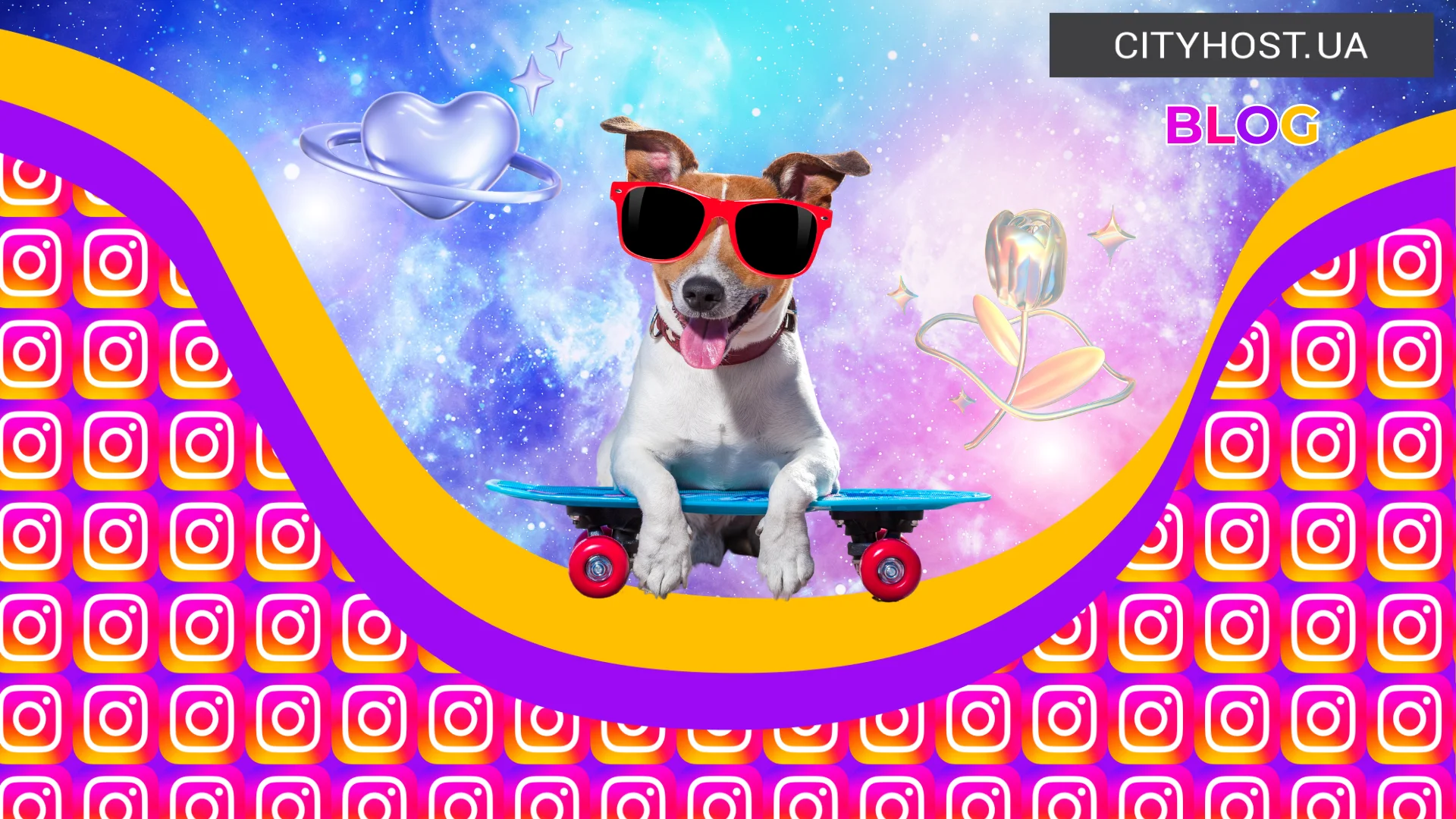
According to Data RePortal, over 60% of adults in Ukraine use social media, with Instagram alone accounting for 11 million users from Ukraine, as reported by “Economic Truth”. This provides ample opportunity to segment your target audience. A business page on Instagram becomes more than just an ad; it acts like another user-friend, thus making the information posted there more trustworthy if people like the page. It's important to understand that this isn’t direct sales like in a catalog, where it’s “see the product → buy”. People mainly go on social media for entertainment, not shopping. However, social media enables the formation of long-term relationships with both potential and current clients, increasing the likelihood of future purchases, no matter what you’re selling.
To turn a page into a business tool, it needs promotion. Usually, this is where we encounter budget constraints, as there’s never enough funding. Therefore, we consider free methods to grow an Instagram account.
By “free growth”, we mean methods without paid advertising, paid collaborations with bloggers, buying followers, or other paid approaches to attract an audience.
However, there still might be some costs: purchasing additional equipment (selfie stick, tripod, lighting, etc.); possibly paying a salary or extra compensation to employees who manage the account; or paid options in apps like Canva. Additionally, it’s often convenient to have one or two paid photo shoots (of people or products) to have images for long-term use. So, a business account is unlikely to be entirely free.
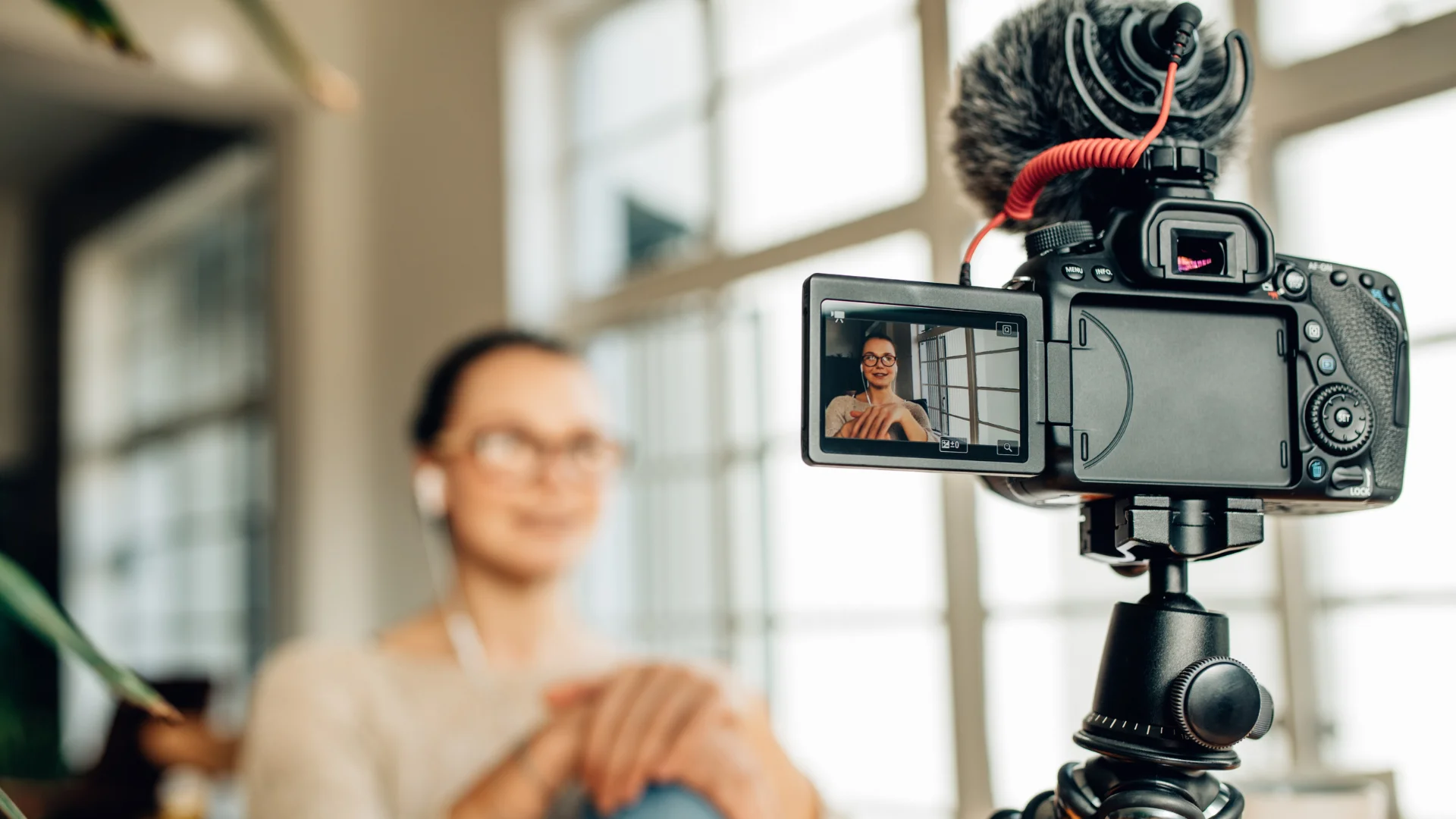
Now that we’ve defined what “free promotion” means, let’s look at how to achieve it.
Read also: How to create a business page on Facebook
Preparing Your Instagram Account for Promotion
You can unlock the business account feature to access more detailed statistics.
It's also essential to fill out the profile correctly:
- It should contain brief and relevant information;
- The username should be concise and associated with your company, making it easier for others to tag you in posts or live collaborations;
- The bio should also be brief and clearly indicate what you do. There are even so-called bio formatting formulas, which are easy to find;
- If it’s important for people to locate you (e.g., you provide services in person), don’t forget to include your address;
- The avatar is a small image, only 180x180 pixels, so it’s best to use either the company logo or a clear portrait.

For example, Cityhost’s account name matches their domain, allowing users to easily find the website online. Their avatar is the logo, which also enhances brand recognition. The description provides insight into the business — they offer hosting services and domain registration, which is convenient. Mentioning that the company has been operating since 2005 builds trust among potential clients, and the phrase “Initiator of the de-Russification of UA domains” signals that Cityhost is a socially active, pro-Ukrainian business.
To share more detailed information about the company, you can include a link to a landing page or official website in the profile. Instagram, as we know, doesn’t favor external links, but it does allow you to add one in the profile header. Other links, such as those for specific promotions, may need to be placed in post comments or in the profile header, where space is limited.
You can also use multi-link services for this purpose. Read this article to learn what multi-links are and how to create them.
And of course, the account should simply be active. Update it regularly, respond to user comments and messages.
By the way, Cityhost also has its own Instagram account. You can follow it by clicking on the link.
How to Grow Your Instagram Account
When it comes to free promotion methods, almost all can be summed up in one sentence: people need a reason to engage with your account. This reason could be interest (like engaging videos or beautiful photos), some material incentive, useful information, problem-solving, or interaction.
Unique and Original Content with Real People
No matter how many images you make in Canva or similar tools, a real face and genuine interaction are essential. Additionally, Instagram’s algorithms favor original content, so familiar memes that have been used by others can hurt your reach.
Selfies, reports from real events, and questions for the audience work better than random, albeit beautiful, images or borrowed thoughts. Usually, the people who see your content are those who follow you. For it to reach other users’ feeds, you need:
- Likes and comments from your followers;
- Alignment with specific hashtags or geolocations;
- Others adding your post to their “favorites” or sharing it with others;
- Mentioning other accounts in your post.
You can add popular locations in your city or region, use search to find popular hashtags on Instagram — anything that gives people a reason to see your post, even if they don’t follow your blog.
In addition, Instagram has internal algorithms that suggest random posts on relevant topics. According to the ad agency Kukurudza, in 2024, engagement — measured by interaction time — is the top priority for Instagram’s algorithms. Interest outweighs simple likes. When your content is targeted correctly, it becomes a promotion tool: algorithms detect users' previous interests and show them more posts on similar topics. This type of audience can be valuable because it’s engaged.
Useful Posts and Interesting Content
People are drawn to several types of content: personal stories (such as posts about yourself, if it’s a specialist blog — like sharing about a vacation, a book you read, or a trip) as well as helpful life hacks, recipes — things they can save and use later. Instagram posts have a character limit, so life hacks are often shared as photo albums with concise texts and diagrams.
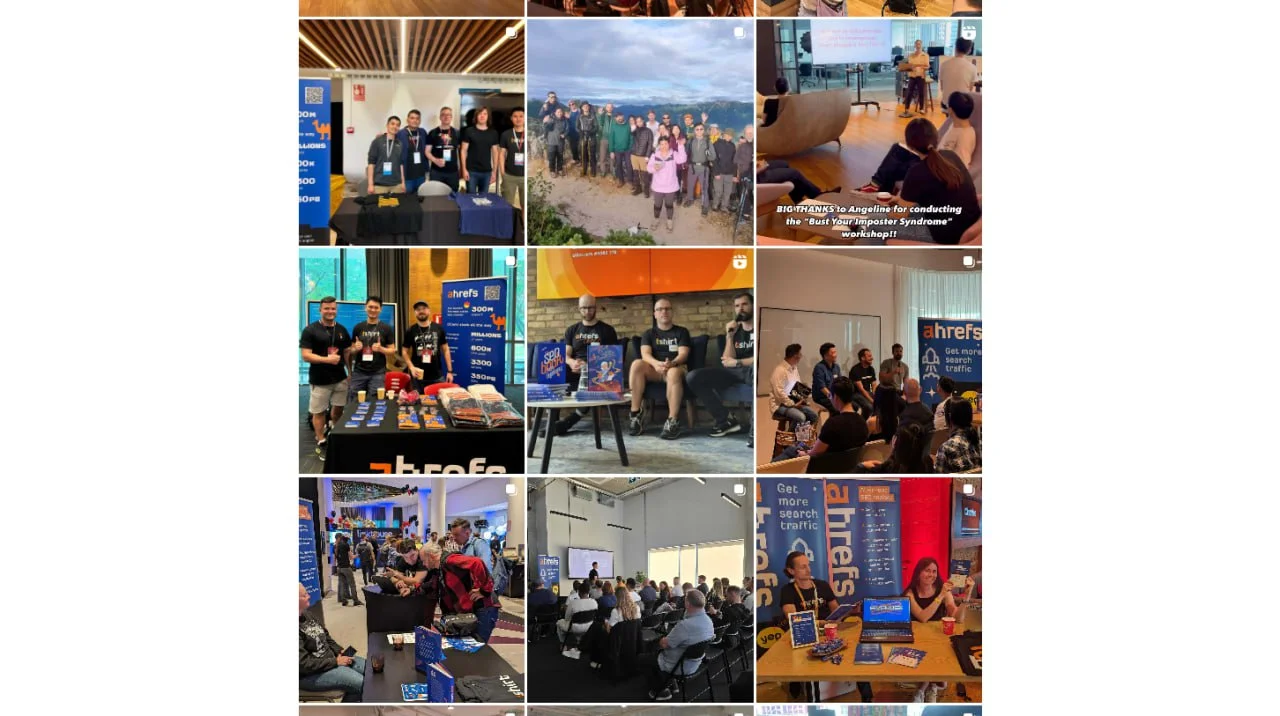
A combination of useful thematic content with entertainment on the Ahrefs Instagram page. For example, in addition to posts about SEO, there is a post with photos and a reel about a trip with the team to Japan.
For a business page of a web developer, everything that benefits the reader, inspires them to send it to a friend, or save it to read later, contributes to the success of the blog or company account.
However, there’s one type of content worth discussing separately.
Reels
You've probably noticed Reels in your social media feeds — they’ve practically taken over. Facebook and Instagram constantly suggest random snapshots of the lives of people like trailer-dwelling housewives, Amish people trying out phones, nuns, cosplayers, and tourists in remote places. The value of Reels is that they’re shown to people who don’t follow your account, meaning anyone, or those who have shown interest in similar content, can see them.
However, competing for attention here is challenging. Everyday Reels, like cleaning cluttered rooms or organizing tiny homes, have a “sticky” effect, giving viewers a dopamine boost as if they themselves tidied up or fixed something without effort. Fashion models, strict psychologists, and other figures each attract viewers in unique ways. You need to find your own way to captivate.
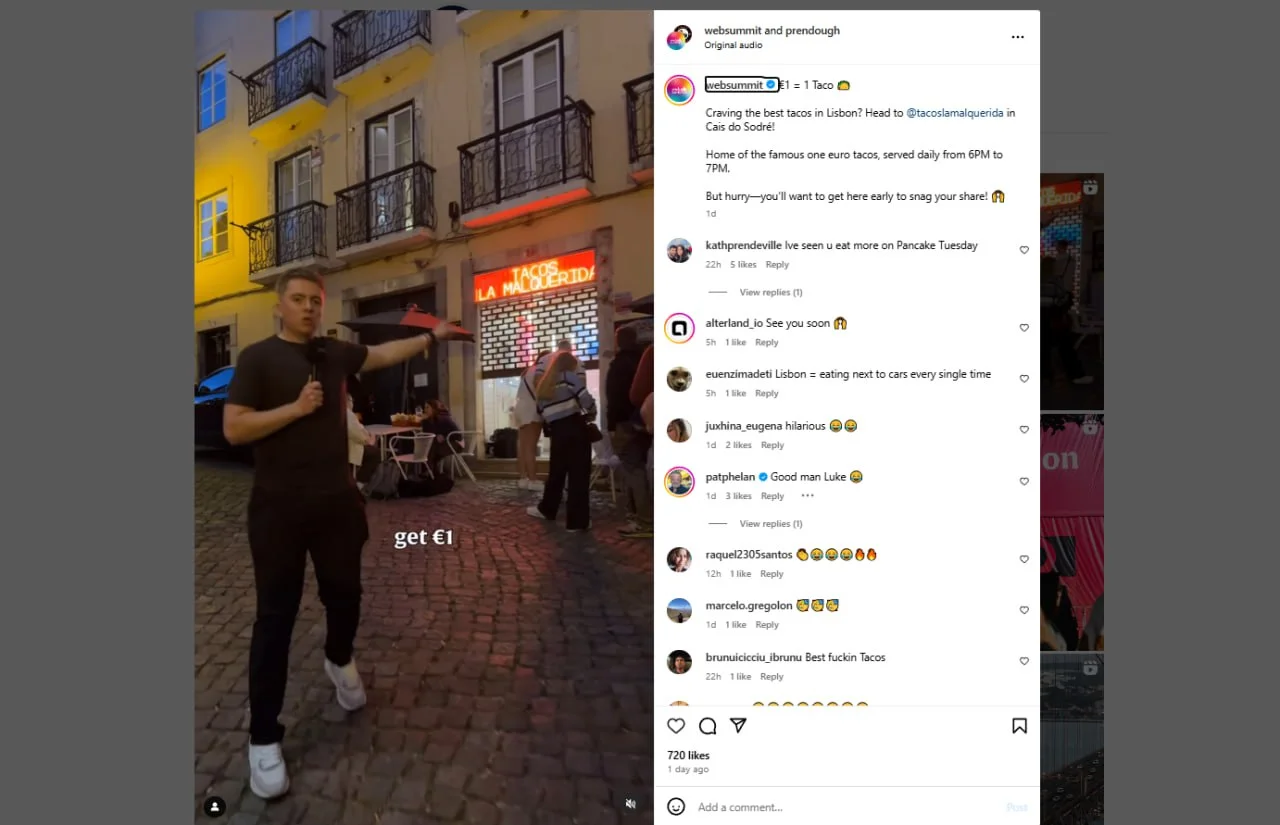
An example of using reels to attract a loyal audience on Instagram. The page of the largest technological event hosts not only posts about technology, but also such entertaining and useful videos.
Companies with large budgets may use animation and special effects to make their Instagram Reels recognizable and interesting. However, in the beginning, you may only need yourself, your office, a wall, a desk, lighting for vlogging, and a phone.
Here are some ways to make engaging Reels:
- Including a real person. Random images can grab attention, but only if they’re of exceptional quality. Share a story or a snippet of your life to keep it interesting.
- Humor or addressing a pain point. A mom is likely to stop for a video promising tips on “red flags” in child development or one that says, “Yelled at the kids? Like many others… Here’s what to do”.
- Unconventional movement in the frame. Like someone jumping into the shot, moving dynamically, putting on makeup, or packing a bag while speaking, adds visual interest.
- Popular memes tailored to the account's niche.
- Pets on screen are an undeniable attention magnet. A cat, dog, or guinea pig can make a brief, “accidental” appearance, or become a main character.
Reel topics can vary:
- funny scenes;
- everyday snapshots of business life, behind-the-scenes glimpses;
- answers to followers' questions;
- very short tutorials, guides, etc.
You can showcase products and services directly, but it’s best to do it creatively — for example, if you’re a stylist or sell clothing, you could put together different outfits.
Finally, always add captions to videos, as many people watch Reels without sound.
Stories
Stories offer a lot of possibilities: you can add active links to specific promotions or important brand news, polls, and more. Tools for creating Stories are also diverse: filters, effects, GIFs, emojis, different text styles, and music.
Instagram typically notifies friends when a user updates their Story, which doesn’t usually happen with regular posts. This is a great way to remind your existing audience about you.
Though Stories are usually relevant for a short period before they disappear, you can save them long-term in highlights — important “evergreen” Stories for your profile. Highlights can be organized by categories, such as customer reviews, promotions, key products, or contact information. Each group can have a distinct cover, all of which are displayed in the profile header.
Read also: How to Create Instagram Highlights: A Step-by-Step Guide
Promotions to Increase Follower Count
The most popular way to gain followers is through a promotion or giveaway — offering prizes to those who follow the account and like a specific post. This isn’t entirely free, but buying one or more gifts can be cheaper than purchasing followers, views, or paid ads.
Types of Instagram promotions for account growth:
- Giveaway. The Instagram user must follow your page and like a specific post, sometimes also sharing it in their Stories, for a chance to win. Bloggers may participate as co-hosts, and the promotion often includes wide advertising and requests for participants to tag friends in the comments to increase chances. The winner is typically selected through a site like random.org, so it's important to plan how you’ll compile the full list of participants.
- Quiz or contest prize. A gift is awarded to the winner of a quiz or competition.
- Gifts for active commenters. Reward active participants under an event, specific post, or during a live broadcast.
However, there are nuances to this promotion method. While many people may follow for the prize, they might not actually be interested in your content. If they unfollow en masse, it can hurt your account’s visibility. Therefore, tailor the giveaway’s conditions and mechanics to fit your audience:
- Offer a prize that’s not just expensive but relevant to a specific audience (e.g., children’s products if your account is for parents, books for book lovers).
- Collaborate with other accounts similar in follower count and niche — not with accounts that join any promotion without consideration but those aligned with your theme.
During the promotion, focus on giving new followers engaging content that encourages them to stay: interesting Stories and Reels, relevant questions on new posts, eye-catching videos, and memes that appeal to the audience.
Engaging with Your Audience
People enjoy attention, talking about themselves, and reading about topics that relate to them. So any way a blog reaches out to followers can boost engagement.
Discussion Questions
The most popular and straightforward method is to write about solving a specific problem and ask followers if they can share their own tips or personal challenges. It’s essential to approach this carefully, as trending, controversial topics tend to gain more engagement — but be prepared to manage these discussions if they become intense.
Online Events
Online events can be paid, free, or accessible through a giveaway (e.g., a winner gets a free masterclass). The event should cover a relevant topic and offer valuable insights not typically available in daily posts. For instance, a dietitian or psychologist could focus on one or two practical tips, while a stylist could go in-depth on a color or fashion trend.
Joint live sessions with bloggers in related niches can also be effective. For example, a book blogger could invite authors, publishers, and bookstore owners, while a stylist could collaborate with fashion designers.
Before hosting an event, you might ask your followers what questions they’d like to ask. This can prompt comments on a post, and during the event, encourage viewers to share their thoughts in the comments, which many are happy to do.
Offline Events
Offline events can range from lectures, seminars, creative gatherings, and workshops to open consultations for small groups. Capture the event with photos and videos by either asking someone to document it or hiring a photographer. These visuals can then be posted online, providing content for multiple posts and Stories over several days.
One event can yield a variety of engaging posts — videos, photo albums, and brief highlights in individual posts. You can also create Reels and Stories by breaking up the video content into shorter, impactful segments. Rather than just reporting on the event, think about how each post can provide extra value to your audience.
Be sure to obtain consent from participants if they appear in photos or videos; most people are happy to agree unless they have personal reasons. In your post, mention active participants, those who helped organize, and any collaborating brands. This broadens reach, as people are more likely to engage with content that features them, and they often repost it on their own profiles after the event.
The key rule for instagram growth — interesting content and effort can save money. Even paid ads don’t guarantee an engaged audience. So, treat social media management as you would offline networking: be genuine, attentive, and focused on audience needs.








